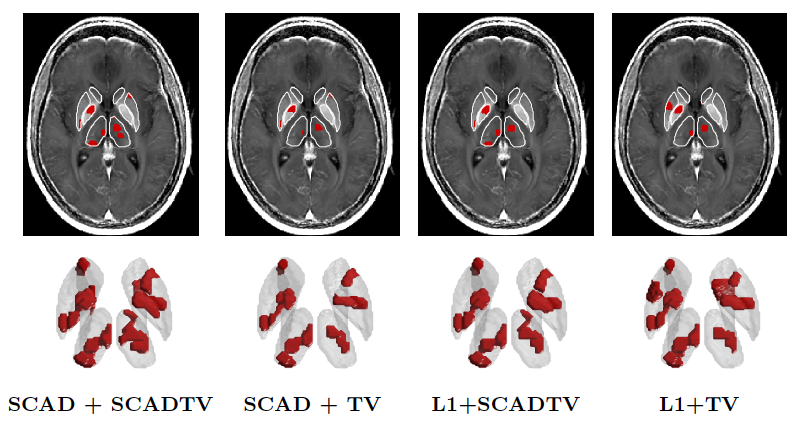Sparse classification for discriminant anatomy detection |
|
Dana Cobzas, Linglong Kong Li Zhang Alan Wilman, |
ReferencesZhang, L., Cobzas, D., Wilman, A. and Kong, L. Significant Anatomy Detection through Sparse Classification: A Comparative Study Transaction of Medical Imaging , 2017 Zhang, L., Cobzas, D., Wilman, A. and Kong, L. An unbiased penalty for sparse classifcation with application to neuroimaging data, International Conference on Medical Image Computing and Computer Assisted Intervention (MICCAI) 2017 |
DescriptionDetecting brain regions that discriminate two populations using high dimensional imaging data is an important aspect of many neuroimaging studies. While traditionally this problem was solved using VBA, recent studies showed better formulations using sparse regularized classification.Our study (TMI 2017) theoretically and experimentally evaluate the accuracy and stability of detected sparse regions in four common sparse classification formulations (two based on total variation penalty and two based on graph net penalty). We also proposed a new penalty (MICCAI17) based on the Smoothly Clipped Absolute Deviation (SCAD) penalty. We experimentally show superiority of three models based on the SCAD and SCADTV penalties when compared to the classical l1 and TV penalties in both simulated and real MRI data from a multiple sclerosis study.
|
